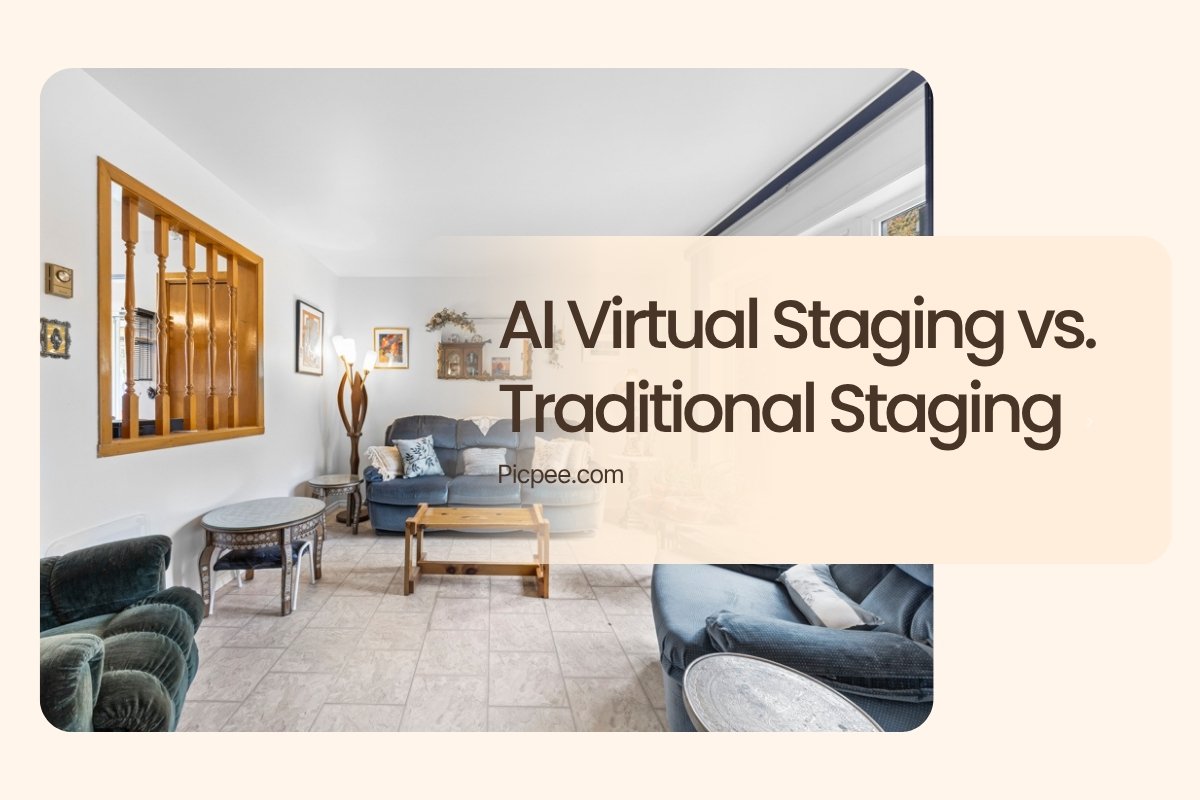In real estate marketing, staging is the secret weapon that transforms an empty property into an inviting home buyers can imagine themselves living in. For years, traditional home staging—with real furniture and décor—has dominated the market. But today, AI virtual staging is revolutionizing how agents, photographers, and sellers present their listings.
This detailed guide explores the differences, pros, cons, and best uses of both approaches, helping you choose the right strategy for your next property listing.
AI Virtual Staging vs. Traditional Staging: A Detailed Comparison
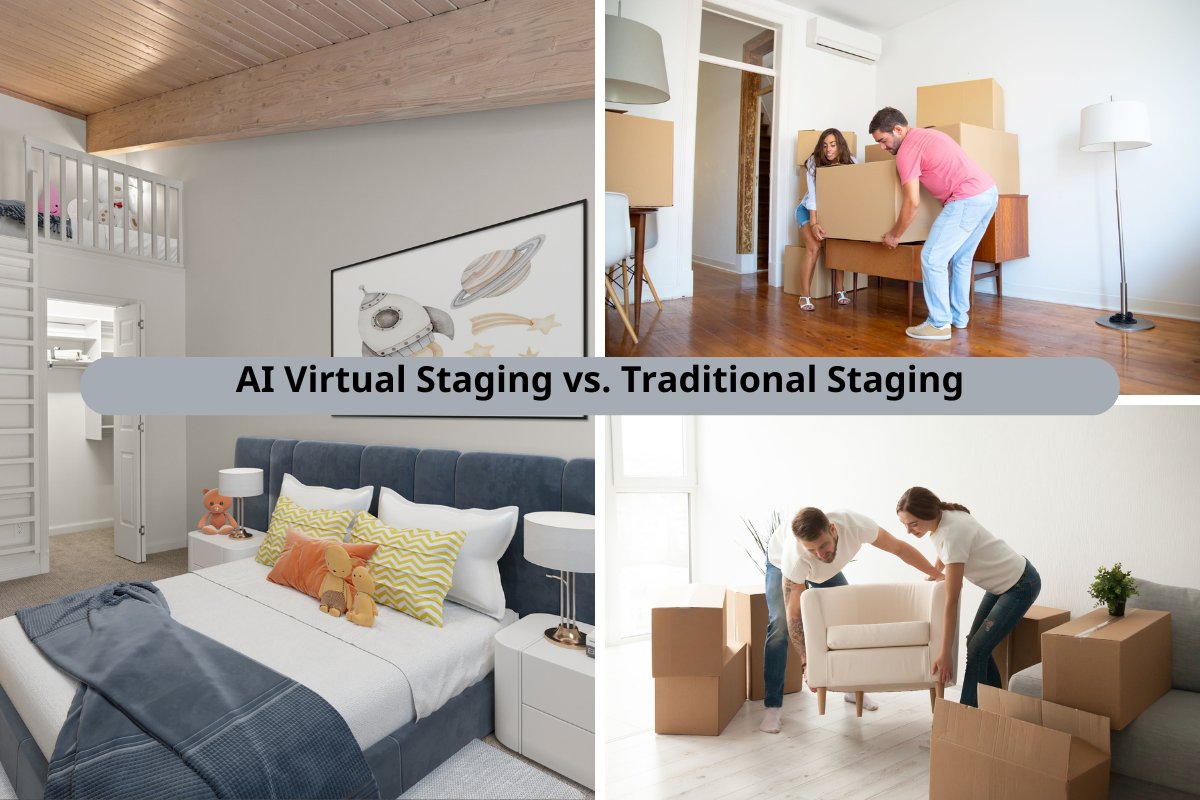
|
Aspect
|
AI Virtual Staging
|
Traditional Staging
|
|
Setup Time
|
A few minutes to a few hours
|
2–5 days on average
|
|
Cost
|
$20–$50 per image
|
$1,500–$5,000+ per property
|
|
Flexibility
|
Easy to change style or layout instantly
|
Requires physical rearrangement
|
|
Realism
|
Highly realistic with AI rendering
|
100% real, tangible setup
|
|
Maintenance
|
None — digital only
|
Requires upkeep and cleaning
|
|
Buyer Experience
|
Online visual appeal
|
In-person emotional connection
|
|
Best Use Case
|
Digital listings and marketing
|
In-person showings and luxury markets
|
Both methods have strong advantages depending on the property type and marketing goal.
Advantages of AI Virtual Staging
AI staging has transformed real estate marketing with efficiency, creativity, and scalability.
Cost-Effective
- Traditional staging can cost thousands, especially for large homes.
- AI staging creates professional visuals for a fraction of the price.
Fast Turnaround
- You can stage an entire property digitally in hours instead of days.
- Perfect for agents who need to publish listings quickly.
Unlimited Design Options
- Instantly switch between modern, rustic, or minimalist interiors.
- Experiment with color schemes and layouts to attract specific buyers.
No Physical Constraints
- No need for furniture delivery, movers, or logistics.
- Great for remote properties or sellers on a tight schedule.
Perfect for Online Marketing
- AI-staged photos are optimized for digital platforms like Zillow, Realtor.com, and Instagram.
- Enhanced images grab attention and drive higher engagement.
Pro Tip: Combine AI staging with professional editing for lighting, sharpness, and color balance to make photos look even more realistic.
Advantages of Traditional Staging
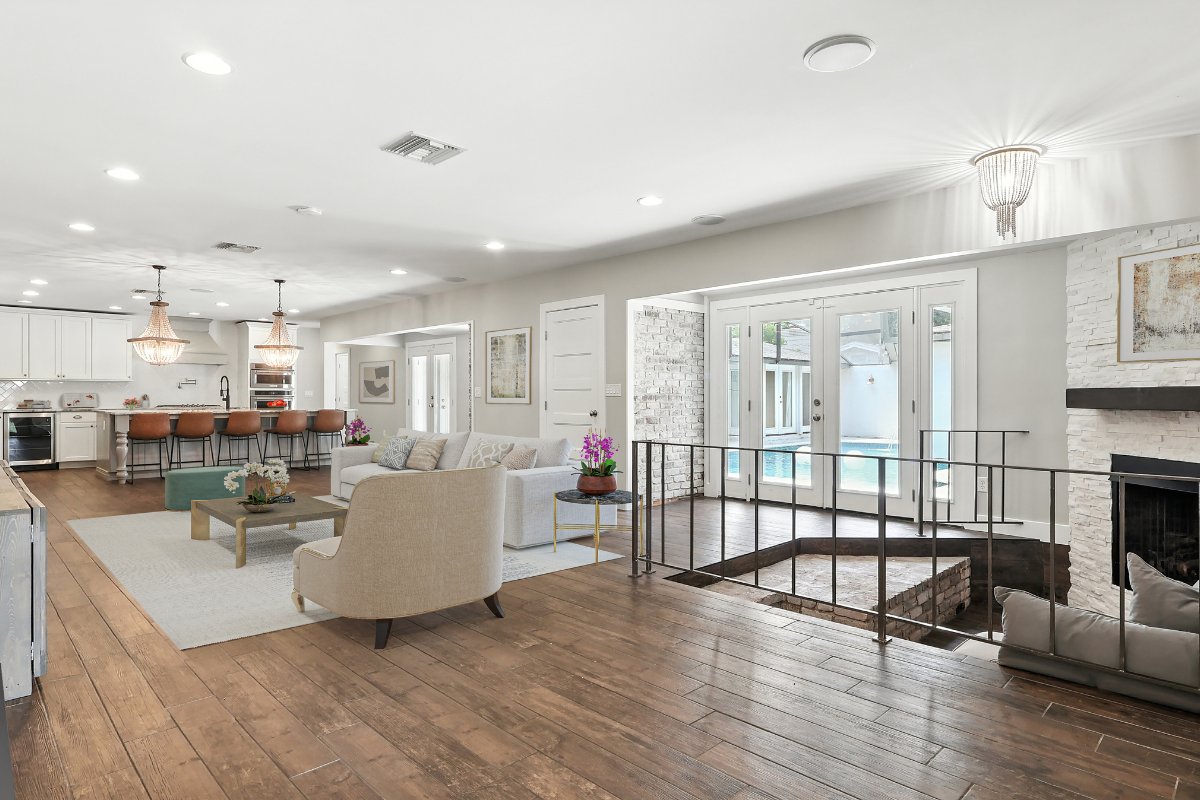
Despite the rise of AI, traditional staging still has a strong presence in real estate — especially for high-value homes.
Tangible Experience
- Buyers can physically walk through rooms and sense proportions.
- Real furniture helps them emotionally connect to the space.
Authenticity
- Every texture, light, and color is physically real — no digital rendering needed.
- Some buyers prefer authenticity over digital enhancement.
Ideal for Open Houses
- Physical staging transforms how people experience the property.
- It enhances comfort and creates memorable impressions.
Local Marketing Value
- In-person staging attracts word-of-mouth buzz and local attention.
- Great for neighborhoods with strong community presence.
Traditional staging remains the gold standard for premium listings where presentation defines value
Disadvantages of AI Virtual Staging
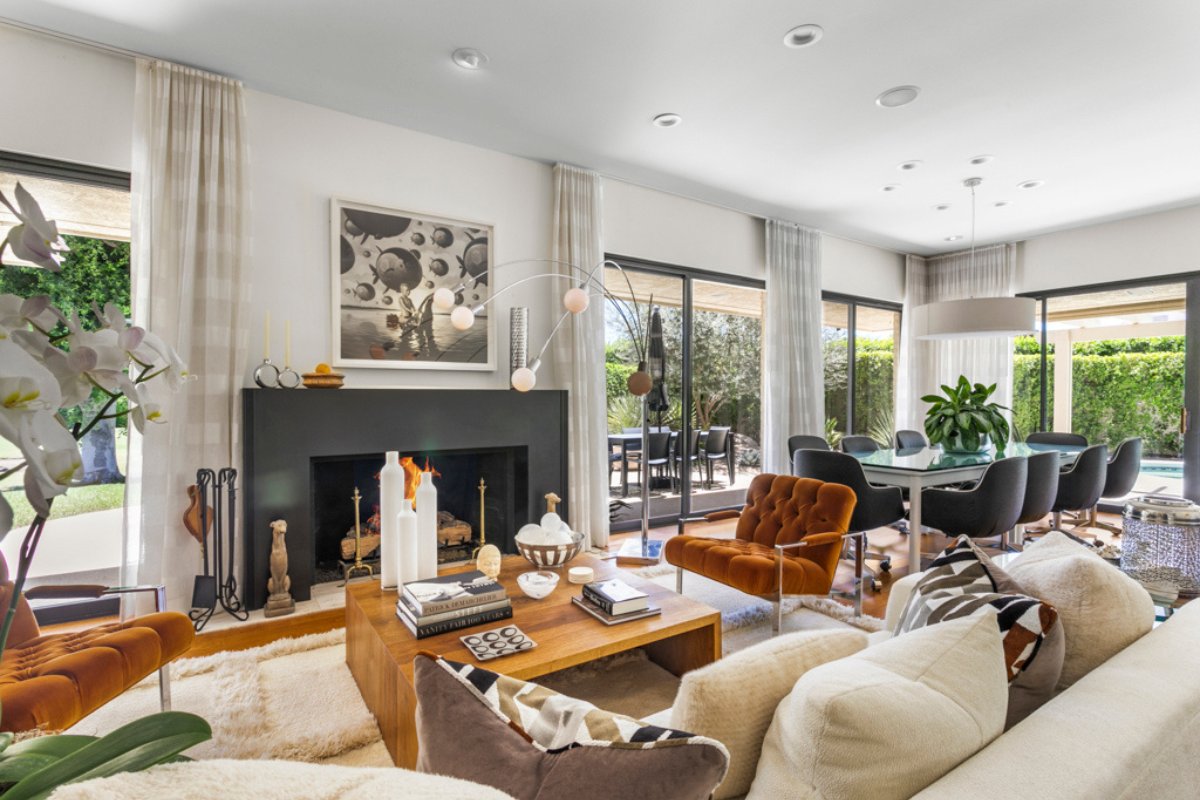
While powerful, AI virtual staging is not without limitations.
Potential for Misleading Images
- Overly edited or unrealistic renders can misrepresent the property.
- Transparency is essential — disclose that images are virtually staged.
No Physical Experience
- Buyers can’t feel scale, texture, or layout in person.
- Some may find the digital version too “perfect” compared to reality.
Quality Depends on Input
- Poor-quality photos reduce the realism of AI staging.
- Lighting and perspective must be accurate for convincing results.
Disadvantages of Traditional Staging

Traditional staging also has its downsides — especially in today’s fast-paced market.
High Cost
- Staging large or multi-room homes can cost thousands.
- Furniture rentals and labor add up quickly.
Time-Consuming
- Coordination, transport, and setup take several days or weeks.
- Slows down listing timelines.
Limited Flexibility
- Changing décor requires additional effort and expense.
- Not ideal for sellers wanting multiple style options.
Maintenance Required
- Real furniture needs cleaning, repair, and protection from wear.
Cost Comparison and ROI

|
Staging Type
|
Average Cost
|
Typical ROI
|
|
AI Virtual Staging
|
$30–$50 per photo
|
100%–500% ROI through faster sales
|
|
Traditional Staging
|
$1,500–$5,000+
|
200%–800% ROI for luxury homes
|
Both methods can generate strong returns, but AI staging delivers faster results for most standard listings.
When to Use Each Method
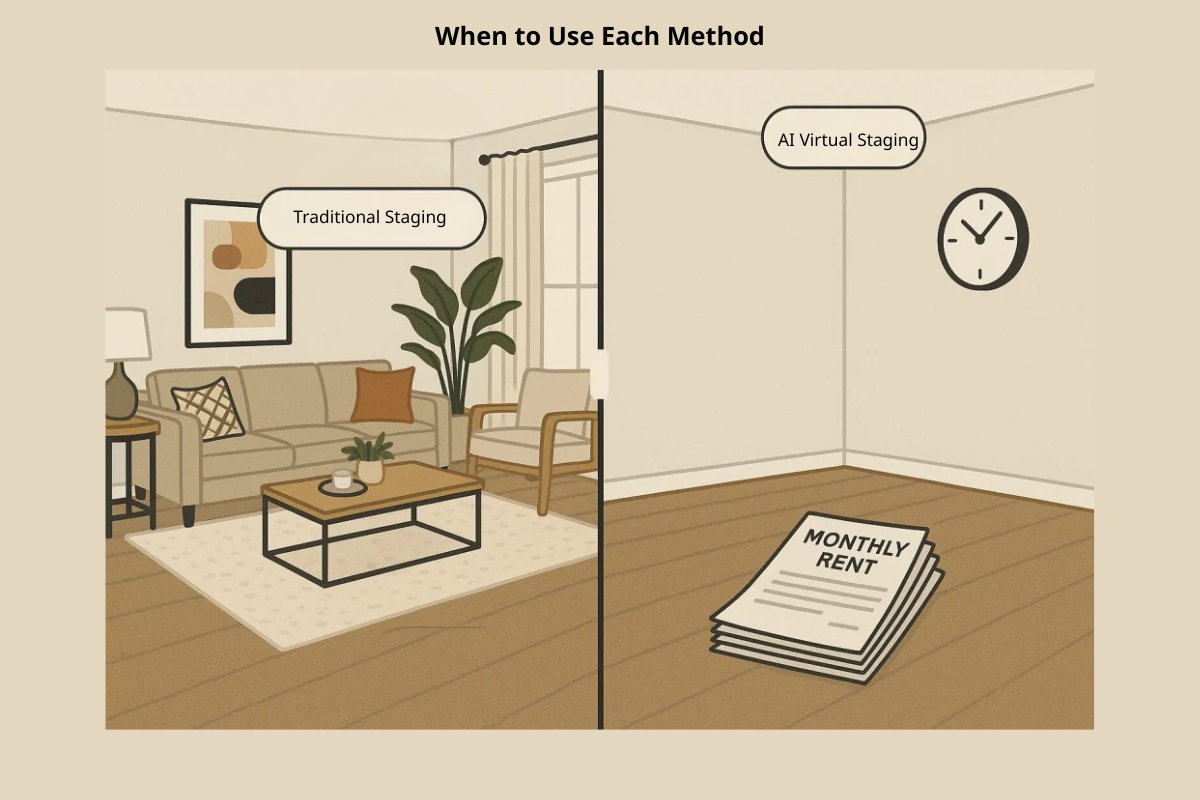
Choose AI Virtual Staging When:
- You’re on a budget but need professional visuals.
- The property is vacant or under construction.
- You want to test multiple interior styles.
- The focus is online marketing or international buyers.
Choose Traditional Staging When:
- You’re selling luxury or high-end homes.
- The property will be shown in person.
- You need tactile, real-world impact to impress buyers.
Each method serves a unique purpose, depending on your audience and goals.
How Picpee Enhances AI Virtual Staging Results
If you decide to use AI virtual staging, Picpee can elevate your results to a professional level.
Picpee specializes in real estate photo editing and staging enhancement, offering:
- Color correction and exposure balancing for natural brightness.
- Object removal to clean up spaces before staging.
- Perspective alignment to ensure straight, balanced lines.
- AI staging refinement for hyper-realistic furniture and textures.
With Picpee, your virtually staged photos maintain authenticity, clarity, and consistency — key to earning buyer trust and engagement.
Conclusion
The debate between AI virtual staging and traditional staging isn’t about which is better — it’s about which works best for your situation.
AI staging delivers speed, affordability, and flexibility, making it ideal for modern, digital-first marketing. Traditional staging provides emotional impact and authenticity, perfect for in-person showings and luxury properties.
The most successful real estate marketers often combine both — using virtual staging to capture online attention and traditional staging to close the sale.
No matter which approach you choose, tools like Picpee help you enhance photo quality, maintain realism, and ensure your listings look their absolute best.
 Single Exposure
Single Exposure Room Cleaning
Room Cleaning Reels
Reels Blended Brackets (HDR)
Blended Brackets (HDR) Changing Seasons
Changing Seasons Slideshows
Slideshows Flambient
Flambient Water in Pool
Water in Pool Individual
Individual 360° Image Enhancement
360° Image Enhancement Lawn Replacement
Lawn Replacement Team
Team Virtual Staging
Virtual Staging Rain to Shine
Rain to Shine Add Person
Add Person Remodel
Remodel Custom 2D
Custom 2D Remove Person
Remove Person 360° Image
360° Image Custom 3D
Custom 3D Background Replacement
Background Replacement Day to Dusk
Day to Dusk Property Video
Property Video Cut Outs
Cut Outs Day to Twilight
Day to Twilight Walkthrough Video
Walkthrough Video Change color
Change color 1–4 Items
1–4 Items
